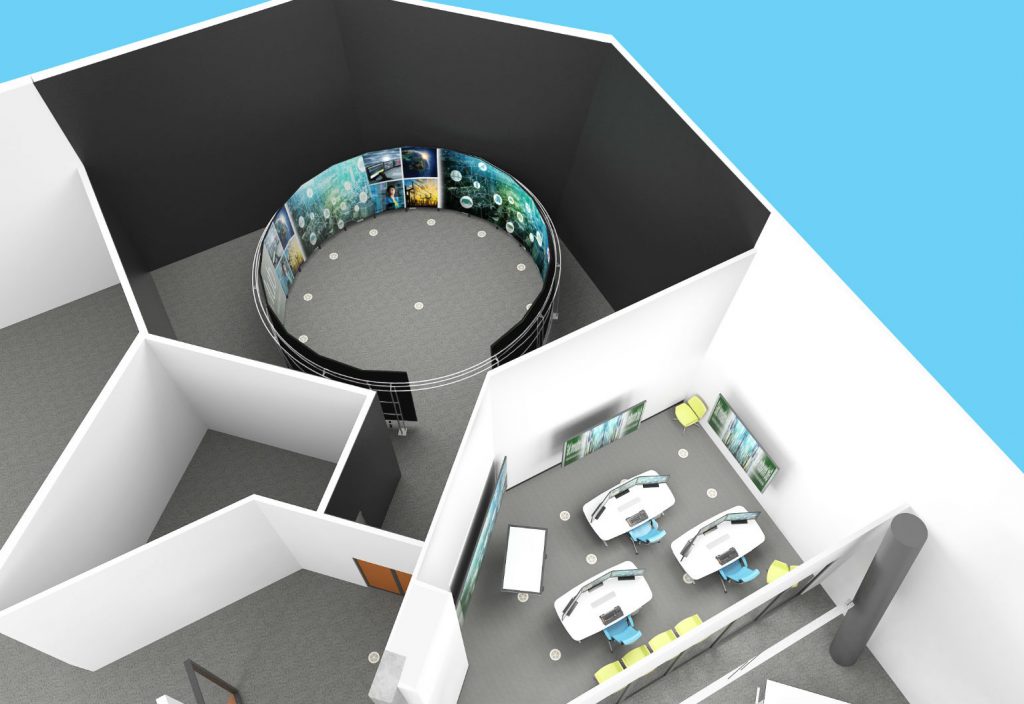Renewable energy technologies are rapidly being adopted around the world, as countries work toward achieving Paris Agreement targets.
US-based consultancy Northeast Group predicts investments in smart grid infrastructure will reach $6.1 billion between 2017 and 2027 in Australia and New Zealand alone.
But as the switch to renewable energy occurs, a new way of thinking about how energy is generated, transported, traded and consumed will be required, and the recently announced Monash Grid Innovation Hub has been established to address these challenges through a collaborative industry partnership approach.
The heart of the hub will be the Future Control Room, which will be equipped with specialist software to view, control and manage big data, distributed energy systems and network security.
Operating alongside a microgrid at Monash University, it will enable a living laboratory for the hub founding partners, which include AusNet Services, Advisian, Indra, redT Energy, Senvion Australia, GE and Energy Exemplar.
The hub will deploy new technology, a large-scale PV with megawatt-sized energy storage systems and embed commercial software packages that enable the team to simulate models and manage what’s happening in a broader grid.
The control room will also track sensors that will be introduced around the Monash campus to allow the team to manage and visualise energy usage, which will form the basis of the microgrid.

Associate Professor Jacek Jasieniak, director of Monash Energy Materials and Systems Institute, said while the team is still discussing what exactly will be tracked by the broader sensor network, it will involve using new technologies to monitor, control and manage the complex electric grid in a simple way. The team will also be able to track aspects such as temperature and humidity.
The control room will use a range of software from GE, Indra and Energy Exemplar to gain an understanding of how to develop, visualise and manage isolated microgrids, embedded microgrids, and larger scale distribution and transmission networks.
This will enable the team to look at distribution and transmission line challenges, which will help in planning future network modifications based on current and future grid constraints.
“These software packages will enable us to develop very detailed, predictive capabilities around what happens in what I would say is a chaotic environment, which is exactly what’s happening now with the renewable systems,” Jasieniak said.
The hub will allow the team to answer questions such as whether there are any limitations in transmission line networks if a large-scale renewable system was deployed in specific regions across the national electricity market and what the optimal grid locations are for large-scale renewable energy systems.
While the software will be able to collect and manage data, one of the challenges will be consolidating that data on a large scale.
“The data’s actually quite abundant in the energy space, but no one really does anything with it, so the first question is ‘How do we start to consolidate this data so that we can do something useful with it?’,” Jasieniak said.
Ageing industry
Jasieniak said the electricity sector has an ageing workforce, and skills shortages in some areas might emerge in the future, particularly in control rooms. At a recent Grid Innovation Hub workshop, AEMO representatives discussed that conventional electricity systems were predictable because you could forecast energy demands and balance these with supply.
“But now things are becoming more unpredictable with renewables being quite chaotic because you don’t know if there’s going to be a cloud or wind change tomorrow at a certain time,” Jasieniak said.
“The control room operator or the people working in those operational roles have to understand how to manage that risk.”
Some of that management could come through more tailored software packages that help operators to make decisions based on risk factors.
But Jasieniak said this means the skills that operators will need will be very different from today. The Grid Innovation Hub will also serve as a training ground for students and existing energy professionals to learn directly on industry-adopted software packages.
